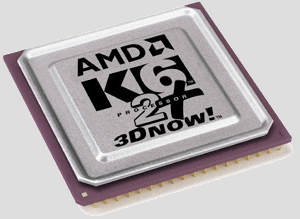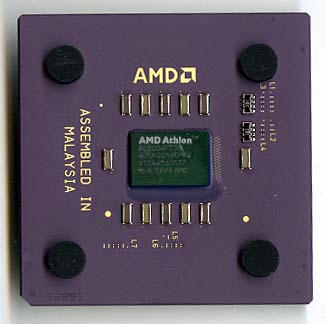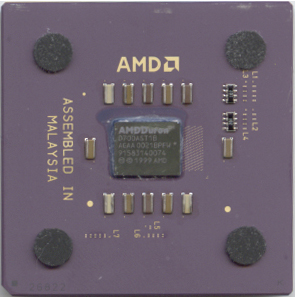 |
|
|
|
In the Forums... |
Posted: February 26, 2001 Written by: Dustin "TimmyC" Jones AMD (cont.) -- Athlon and Beyond 1998: The K6 family was then introduced to the portable PC market with the addition of the K6-2/3 +. Simply a power and heat efficient version of the K6-2/3, the K6-2/3 + was a nice addition to AMD’s arsenal.  AMD's Mobile Attack 1999: After the boom of the K6s, AMD went back to work, developing a processor which would soon change the CPU industry for the better: the K7, or Athlon. Running on a Slot-A board, the Athlon was a monster in every way. Starting at 500MHz and going to 800MHz, the original Athlon was not only a hot performer, but also a hot CPU. A drawback to the Athlon was its high power consumption and heat production. For this reason, the Athlon wasn’t a big contender in the OEM and retail market, which Intel still had a strangle-hold on, for the time being. The Athlon went through some changes over the next year, including a micron shrink, which helped reduce heat and power consumption, but what was to come next tipped the CPU race in AMD’s favor. 2000: While still called an Athlon, and thus being a member of the Athlon series, the AMD Thunderbird is another processor altogether. This processor took AMD from being close to Intel, to now being its virtual equal. Running on a new interface, Socket 462, and debuting at 750MHz, the Thunderbird is a great upgrade from the Athlon. Not only is it faster, it also runs cooler, takes less power, and is very cheap. This processor is AMD’s first entrant to the GHz family as well, reaching 1.2 GHz maximum at the time of writing.  The "oh-so-familiar" Athlon CPU 2000: But that wasn’t enough for AMD, no; it needed to squash the Celeron, too. So what it did was released a ‘downgraded’ Athlon called the Duron. Now, when you hear downgraded; you probably think it’s a lot slower. However, this is not the case with the Duron. In fact, the Duron is not all that much slower than even a Thunderbird of the same clock, and its smaller die makes for cheaper production, and thus a very good consumer price. The Duron debuted at 600MHz and with AMD’s recently released 850MHz model, the Duron isn’t just a cheap alternative like the Celeron.  A low price and great overclockability? The Duron definitely has the potential to take the Celeron's crown as the gamer's CPU. |
||
|
| |||
|---|---|---|---|